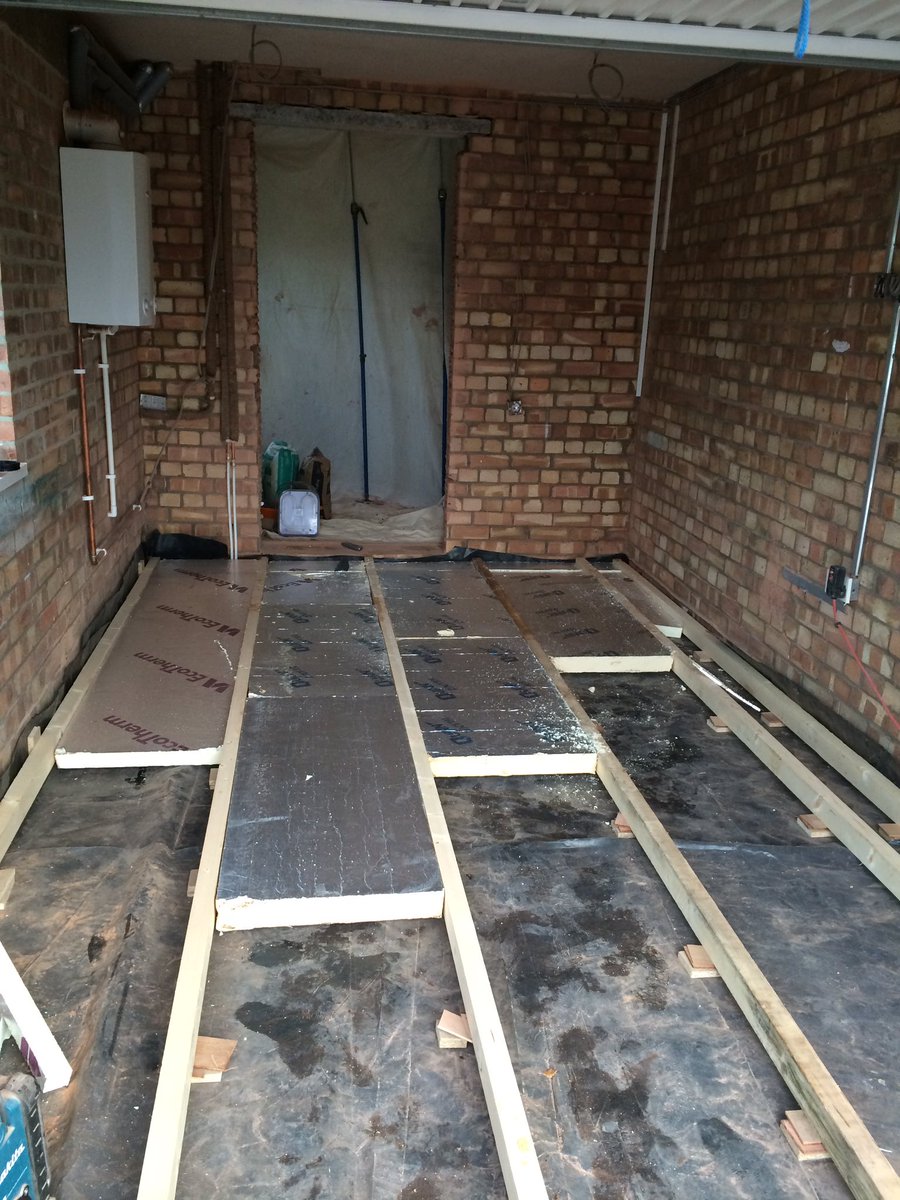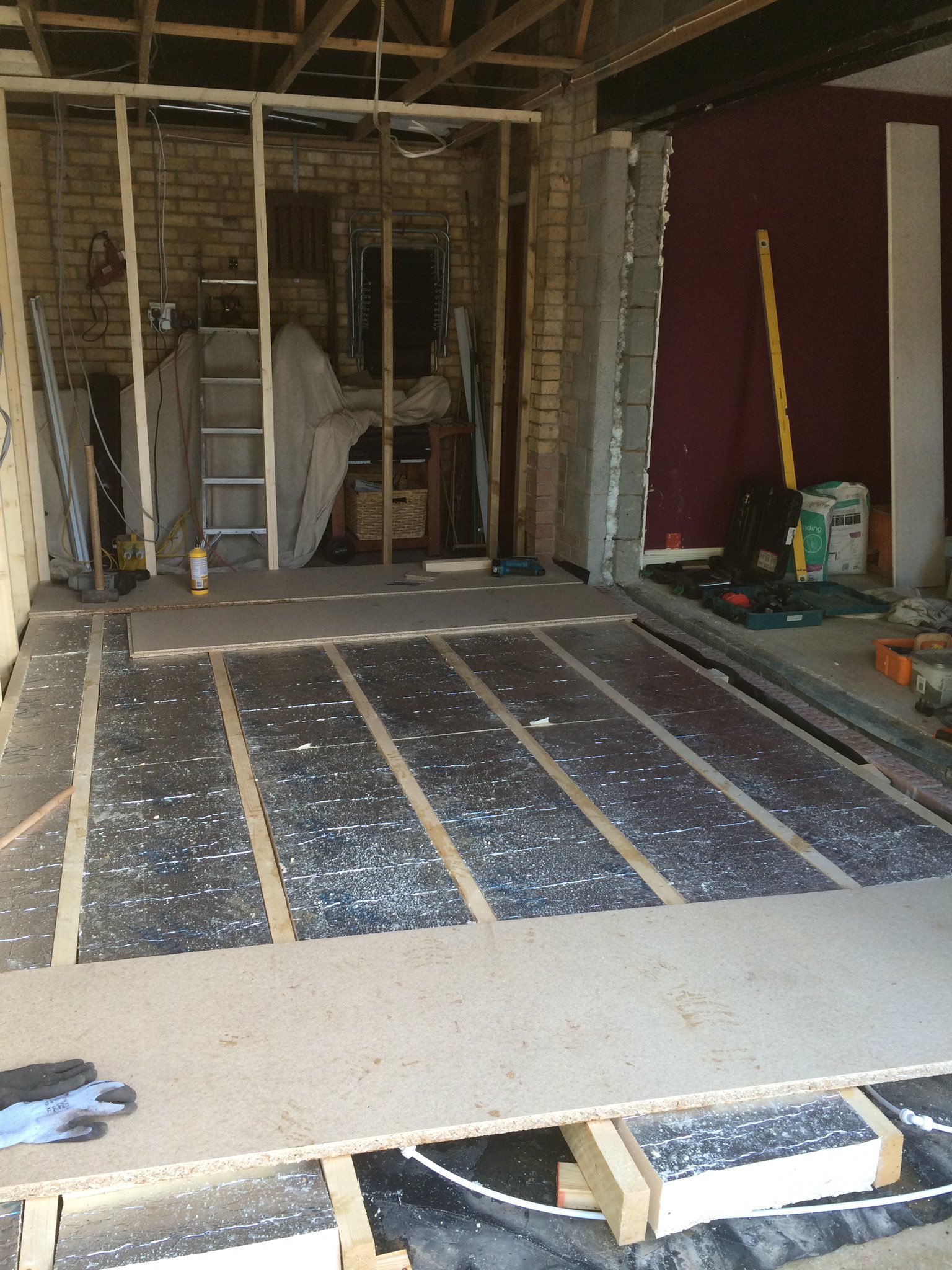Converting a garage into a functional and comfortable living space has become a popular home improvement project. However, one essential aspect often overlooked in this process is garage floor insulation. Insulating the garage floor is crucial for creating a space that is not only cozy and comfortable but also energy-efficient. In this comprehensive article, I’ll explore the benefits of garage floor insulation conversion, the various insulation options available, the installation process, and the resulting advantages for your transformed space.
The Importance of Garage Floor Insulation
Insulating the garage floor is essential for several reasons. First and foremost, it helps regulate the indoor temperature, making the converted space more comfortable throughout the year. Without proper insulation, the garage floor can feel cold and unwelcoming, making it challenging to use the area as a living space or workspace.
Additionally, garage floor insulation helps prevent heat loss and drafts, which can significantly impact energy efficiency. By creating a thermal barrier between the garage and the ground below, insulation prevents heat from escaping during the colder months, reducing the need for excessive heating and lowering energy bills.
Types of Garage Floor Insulation
When it comes to garage floor insulation, there are various options to choose from, depending on your budget and specific needs. One popular choice is foam board insulation, which comes in rigid panels that are easy to install. Foam board insulation has an excellent thermal resistance and moisture resistance properties, making it an effective and long-lasting solution for insulating garage floors.
Another option is fiberglass batt insulation, which consists of fiberglass material that is rolled or cut to fit between floor joists. While fiberglass batt insulation is more affordable than foam board, it may require additional measures to protect it from moisture and pests.
Spray foam insulation is another effective choice for garage floor insulation. Spray foam is applied as a liquid and expands to fill gaps and crevices, providing a seamless and airtight insulation layer. It offers superior thermal performance and can help create a more energy-efficient space.

The Installation Process
Insulating a garage floor requires careful planning and preparation. Before installing the insulation, it’s essential to clean and level the garage floor to create a smooth surface for the insulation material. If there are any cracks or gaps in the floor, these should be sealed to prevent air leakage.
Once the floor is prepared, the chosen insulation material can be installed. For foam board insulation, the rigid panels are cut to size and laid on the garage floor. For fiberglass batt insulation, the batts are placed between the floor joists, while spray foam insulation is sprayed directly onto the floor.
It’s crucial to ensure that the insulation is properly installed, without gaps or overlaps, to achieve maximum effectiveness. Additionally, consider using a vapor barrier or moisture barrier to protect the insulation from potential moisture issues.
Advantages of Garage Floor Insulation Conversion
Garage floor insulation conversion offers numerous advantages for your transformed space. By insulating the floor, you’ll create a more comfortable and enjoyable living area that can be used year-round. The insulation will keep the space warm in winter and cooler in summer, making it a versatile and inviting environment for various activities.
Moreover, garage floor insulation conversion can lead to significant energy savings. The insulated floor will help maintain a more stable indoor temperature, reducing the need for constant heating or cooling, and ultimately lowering your energy bills.
Lastly, insulating the garage floor can also improve the overall value of your home. A well-insulated and functional garage conversion can be seen as a valuable addition to potential buyers, making your property more attractive in the real estate market.
Garage floor insulation conversion is a valuable investment that can transform your garage into a comfortable and energy-efficient living space. With various insulation options available, you can choose the one that best suits your needs and budget. By creating a well-insulated space, you’ll enjoy a cozy and inviting environment throughout the year, while also benefitting from energy savings and an increase in the value of your home. Whether you plan to use the converted space as a home office, a gym, or an extra living area, proper garage floor insulation is a crucial step in creating a functional and enjoyable space for you and your family.
Garage Conversion – insulation into floor joists Garage
Garage Conversions C.R Design Services Garage Conversion
How to best insulate this garage conversion? I am currently
Garage Retrofit with Insulated Concrete Floor
Insulation of garage floor for conversion to living space Garage
Twitter 上的 More Space Garage Co:”Suspended insulated floor
Installing Rigid Foam Above a Concrete Slab
Related Posts:
- Durable Garage Floor Covering
- Garage Floor Paint Preparation
- Garage Floor Makeover Ideas
- Garage Floor Epoxy White
- Heavy Duty Garage Floor Coating
- High Gloss Garage Floor Coating
- Garage Floor Epoxy Sealer
- PVC Garage Flooring Tiles
- Garage Floor Options Comparison
- Garage Floor Base Molding
Garage Floor Insulation Conversion: Get Warm and Comfortable in Your Home
When it comes to making a home comfortable and warm, one of the most overlooked elements is the insulation of the garage floor. Many homeowners don’t realize that the garage floor can be insulated to help keep out cold air and make the entire space more comfortable. This article will provide an overview of what is involved in a garage floor insulation conversion and offer some helpful tips for getting the job done.
What Is Involved In A Garage Floor Insulation Conversion?
A garage floor insulation conversion involves removing existing flooring, if present, and adding a layer of insulation to keep out cold air and make the space more comfortable. The insulation should be made of a material that is impervious to moisture and resistant to mold or mildew. Depending on the type of insulation being used, it can be glued directly to the concrete slab or attached using staples or nails. If the insulation is not properly installed it can result in cold drafts and uneven heat distribution throughout the garage.
The next step in a garage floor insulation conversion is to add a vapor barrier. This material is designed to keep moisture from seeping into the insulation and damaging it. The vapor barrier should be installed beneath the insulation layer and should extend up the walls of the garage at least 6 inches (15 cm). Once this layer has been installed, additional layers of insulation may be added depending on the desired level of protection.
In addition to insulating the garage floor, it is important to also cover any exposed wiring or plumbing lines with an insulated wrap. This will protect these components from extreme temperatures and help keep them functioning properly. Once all of these components have been installed, a new finish flooring can then be installed over top of the insulation for a finished look.
FAQs About Garage Floor Insulation Conversion
Q: How Much Does A Garage Floor Insulation Conversion Cost?
A: The cost of a garage floor insulation conversion can vary depending on factors such as labor costs, material costs, and size of the area being insulated. On average, most homeowners can expect to spend between $2,000 and $3,000 for a full-scale garage floor insulation conversion project.
Q: Is It Necessary To Cover Exposed Wiring With An Insulated Wrap?
A: Yes, it is important to cover exposed wiring with an insulated wrap in order to protect it from extreme temperatures and help keep it functioning properly. Failing to do so could potentially lead to electrical issues or fire hazards in your home.
Q: What Type Of Finish Flooring Should Be Installed Over Top Of The Insulation?
A: Any type of finish flooring that is compatible with the insulation can be used over top of it. Some popular options include vinyl plank flooring, laminate flooring, tile, and carpeting. It is important to make sure that whatever type of finish flooring you choose is compatible with the underlying insulation before installation.
Q: How Long Will A Garage Floor Insulation Conversion Last?
A: With proper installation and maintenance, most types of garage floor insulation conversions will last up to 10 years or more before needing to be replaced. It is important to inspect your insulation periodically for signs of wear or damage that may require repair or replacement.
Conclusion
Garage floor insulation conversion can provide many benefits for homeowners looking to make their home more comfortable and energy-efficient. From keeping cold air out and making your space more comfortable, to protecting exposed wiring and plumbing lines from extreme temperatures, there are plenty of reasons why installing a layer of insulation in your garage is worth considering. With proper installation and maintenance, your garage floor insulation conversion should last up to 10 years or more before needing replacing.







